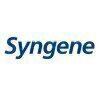Chemist Quality Control
30+ Chemist Quality Control Interview Questions and Answers

Asked in Sun Pharmaceutical Industries

Q. What detectors are used in gas chromatography?
A detector is used in gas chromatography to measure the concentration of analytes in the sample.
The detector is an essential component of a gas chromatography system.
It detects and quantifies the separated components of a sample.
Different types of detectors are used, such as flame ionization detector (FID), thermal conductivity detector (TCD), and electron capture detector (ECD).
The choice of detector depends on the specific analytes being measured.
Detectors provide a signal ...read more

Asked in Sun Pharmaceutical Industries

Q. What is the pH range for drinking water?
The pH range in drinking water typically falls between 6.5 and 8.5.
The pH range in drinking water is important for maintaining water quality and safety.
A pH below 6.5 may indicate acidic water, while a pH above 8.5 may indicate alkaline water.
The ideal pH range for drinking water is generally considered to be between 6.5 and 8.5.
pH levels outside this range may affect the taste, odor, and safety of the water.
For example, acidic water with a low pH may corrode pipes, while alk...read more
Chemist Quality Control Interview Questions and Answers for Freshers

Asked in Sun Pharmaceutical Industries

Q. What is the boiling point of tungsten?
Boling point tungsten does not exist as tungsten has a very high melting point.
Tungsten has a melting point of 3422°C, which is the highest of all metals.
The boiling point of tungsten is not applicable as it does not exist in a liquid state under normal conditions.
Tungsten is commonly used in high-temperature applications such as light bulb filaments and rocket nozzles.

Asked in Syngene International

Q. What are the instruments used,what is the make and software you are using for KF Titrations
We use Karl Fischer Titrator for moisture analysis. The make and software depend on the model.
Karl Fischer Titrator is used for moisture analysis
The make and software depend on the model being used
Some common makes are Metrohm, Mettler Toledo, and Hanna Instruments
Common software includes Tiamo and Volumetric Karl Fischer Titration software

Asked in GlobalData

Q. What is organic chemistry?
Organic chemistry is the branch of chemistry that deals with the study of carbon-based compounds and their properties.
Organic chemistry focuses on the structure, properties, composition, reactions, and synthesis of carbon-based compounds.
It involves the study of hydrocarbons, such as alkanes, alkenes, and alkynes, as well as functional groups like alcohols, ethers, and carboxylic acids.
Organic chemistry plays a crucial role in pharmaceuticals, polymers, dyes, flavors, fragran...read more

Asked in UltraTech Cement

Q. What precautions should be taken if there is a crisis in raw material supply?
In case of a crisis in raw material supply, it is important to take immediate actions to mitigate the impact on production and quality control.
Communicate with suppliers to understand the root cause of the supply crisis
Identify alternative sources of raw materials to ensure continuity of production
Prioritize critical products and allocate available raw materials accordingly
Implement strict quality control measures to ensure the quality of products is not compromised
Develop co...read more
Chemist Quality Control Jobs




Asked in Sun Pharmaceutical Industries

Q. What bases are commonly used in the laboratory?
Bases are used in laboratories for various purposes, including pH adjustment, neutralization reactions, and synthesis of chemicals.
Bases are substances that can accept protons or donate pairs of electrons.
They are commonly used to adjust the pH of solutions by neutralizing acidic substances.
Bases are also used in neutralization reactions to convert acids into salts and water.
In chemical synthesis, bases are often employed as catalysts or reactants.
Examples of bases commonly u...read more

Asked in UltraTech Cement

Q. How do you handle customer complaints regarding different challenges or issues?
Handle customer complaints by listening, empathizing, investigating, resolving, and following up.
Listen actively to the customer's concerns without interrupting
Empathize with the customer and acknowledge their frustration
Investigate the issue thoroughly to understand the root cause
Resolve the issue promptly and effectively, offering solutions or compensation if necessary
Follow up with the customer to ensure their satisfaction and prevent future issues
Share interview questions and help millions of jobseekers 🌟


Asked in Atul

Q. What is titration & using these solution?
Titration is a technique used to determine the concentration of a solution by reacting it with a solution of known concentration.
Titration involves adding a solution of known concentration (the titrant) to a solution of unknown concentration until a reaction is complete.
The point at which the reaction is complete is called the endpoint.
The endpoint is usually detected using an indicator, which changes color when the reaction is complete.
Titration can be used to determine the ...read more

Asked in UltraTech Cement

Q. How do you maintain required workability and quality at the site?
Maintain workability & quality by proper planning, monitoring, testing, and communication.
Develop a detailed quality control plan outlining procedures and specifications.
Regularly monitor and test materials and processes to ensure compliance with standards.
Communicate effectively with all stakeholders to address any issues or changes in requirements.
Implement corrective actions promptly to maintain quality and workability.
Train and educate staff on quality control measures an...read more

Asked in Granules India Limited

Q. Get nore abt Pharma company. How machine works ? What is API & R&D
Pharma companies use machines to produce drugs. API is the active ingredient in a drug. R&D is the research and development of new drugs.
Pharma companies use various machines like mixers, reactors, and centrifuges to produce drugs.
API is the active ingredient in a drug that produces the desired effect on the body.
R&D is the process of discovering and developing new drugs through research and testing.
Pharma companies invest heavily in R&D to create new drugs that can treat var...read more

Asked in Sun Pharmaceutical Industries

Q. Strongest acids in Laboratory
The strongest acids commonly used in laboratories are sulfuric acid, hydrochloric acid, and nitric acid.
Sulfuric acid (H2SO4) is a highly corrosive and strong acid commonly used in various laboratory applications.
Hydrochloric acid (HCl) is another strong acid frequently used in laboratories for pH adjustment and chemical reactions.
Nitric acid (HNO3) is a powerful acid used for various purposes, including metal etching and cleaning.
Other strong acids include phosphoric acid (H...read more

Asked in UltraTech Cement

Q. Regarding the loading of concrete, what precautions are taken before loading?
Precautions before loading concrete include checking the quality of materials, ensuring proper mixing, and inspecting the equipment.
Check the quality of materials such as cement, aggregates, and water to ensure they meet specifications.
Ensure proper mixing of the concrete to achieve the desired strength and consistency.
Inspect the equipment used for loading, such as trucks or conveyors, to ensure they are in good working condition.
Verify that the loading area is clean and fre...read more

Asked in ICICI Bank

Q. What is the annual salary package?
The package for annum refers to the unit of time equal to one year.
Annum is a Latin term meaning 'year'.
In the context of chemistry, the package for annum is used to express rates or frequencies over a period of one year.
For example, the decay rate of a radioactive substance may be measured in disintegrations per annum.

Q. What is the principle of ICP-OES?
ICP-OES is a technique used to determine the elemental composition of a sample by measuring the intensity of light emitted by the sample.
ICP-OES stands for Inductively Coupled Plasma Optical Emission Spectroscopy
It works by ionizing the sample with plasma and then measuring the light emitted by the excited ions
The intensity of the light is proportional to the concentration of the element in the sample
ICP-OES is commonly used in environmental analysis, pharmaceuticals, and met...read more

Asked in Lupin

Q. What is a buffer solution?
A buffer solution is a solution that resists changes in pH when small amounts of acid or base are added.
Buffer solutions are made up of a weak acid and its conjugate base or a weak base and its conjugate acid.
They are commonly used in chemical and biological experiments to maintain a stable pH.
Examples of buffer solutions include acetic acid/sodium acetate buffer and phosphate buffer.
Buffer capacity is the amount of acid or base that can be added to a buffer solution without ...read more

Asked in UltraTech Cement

Q. How can we provide a more efficient supply to the customer?
Efficient supply to customers can be achieved by optimizing inventory management, streamlining production processes, and utilizing technology.
Optimize inventory management by implementing just-in-time inventory system
Streamline production processes to reduce lead times and increase production capacity
Utilize technology such as automated ordering systems and real-time tracking for better supply chain visibility
Asked in Sri Balaji Metal Industries

Q. What are the uses of alluminium?
Aluminium is a versatile metal with various uses in industries such as construction, transportation, packaging, and electronics.
Used in construction for windows, doors, roofing, and siding
Used in transportation for car parts, airplane parts, and bicycle frames
Used in packaging for cans, foils, and containers
Used in electronics for wiring, heat sinks, and computer parts

Asked in UltraTech Cement

Q. IS code of Testing of Raw materials
IS code for testing of raw materials is essential for quality control in chemistry.
IS 3400: Methods for testing of raw materials for the paint industry
IS 1708: Methods for testing of raw materials for the rubber industry
IS 5402: Methods for testing of raw materials for the pharmaceutical industry

Q. What is the principle of EDXRF?
EDXRF stands for Energy Dispersive X-ray Fluorescence. It is a non-destructive analytical technique used for elemental analysis.
EDXRF measures the characteristic X-rays emitted by a sample when it is bombarded with high-energy X-rays.
The energy of the emitted X-rays is characteristic of the elements present in the sample.
EDXRF can be used for qualitative and quantitative analysis of a wide range of elements.
It is commonly used in materials science, environmental analysis, and...read more
Asked in Sri Balaji Metal Industries

Q. What type of metal alloys are possible
Various metal alloys are possible depending on the combination of metals used.
Metal alloys are created by combining two or more metals.
Common metal alloys include brass (copper and zinc), bronze (copper and tin), and steel (iron and carbon).
Alloys can also be created using non-metal elements such as silicon and boron.
The properties of the resulting alloy depend on the metals used and their proportions.

Asked in Lupin

Q. What is the principle of HPLC?
HPLC principle is based on the separation of components in a mixture using high pressure to force the mixture through a column filled with a stationary phase.
HPLC stands for High Performance Liquid Chromatography
The stationary phase can be a solid or a liquid
The mobile phase is the liquid that carries the sample through the column
The separation is based on the differences in the components' interactions with the stationary phase
HPLC is commonly used in pharmaceuticals, food a...read more

Asked in Atul

Q. Where are indicators used?
Indicators are used in quality control to determine the endpoint of a reaction or to indicate the presence of a specific substance.
Indicators are used in titrations to determine the endpoint of a reaction.
They can also be used to indicate the presence of a specific substance in a sample.
Common indicators include litmus paper, phenolphthalein, and methyl orange.
Indicators can be organic compounds or inorganic compounds.
The choice of indicator depends on the type of reaction be...read more

Asked in UltraTech Cement

Q. IS code of Slump Testing
IS code of Slump Testing is IS: 1199-1959
IS code for Slump Testing is IS: 1199-1959
Slump test is conducted to measure the workability of concrete
The test involves filling a slump cone with concrete, then removing the cone and measuring the amount of slump
Asked in Ameya Foods

Q. What qualities do you look for when selecting a quality control person?
Quality person selection involves a thorough screening process to identify the most suitable candidate for the job.
Define the job requirements and qualifications
Create a job description and post it on relevant job boards
Review resumes and cover letters to identify potential candidates
Conduct phone and in-person interviews to assess skills and personality
Check references and conduct background checks
Make an offer to the most qualified candidate

Asked in Bisleri

Q. What is water?
Water is a transparent, tasteless, odorless, and nearly colorless chemical substance.
Water is composed of two hydrogen atoms and one oxygen atom, chemically known as H2O.
It is essential for all known forms of life and is the most abundant substance on Earth.
Water exists in three states: solid (ice), liquid (water), and gas (water vapor).
It has a high specific heat capacity, making it an effective heat regulator.
Water is a universal solvent, capable of dissolving many substanc...read more

Asked in UltraTech Cement

Q. How do you manage cost per cubic meter?
Managing cost/m³ involves optimizing processes, reducing waste, and negotiating with suppliers.
Optimize processes to increase efficiency and reduce costs
Reduce waste by implementing recycling programs or using raw materials more efficiently
Negotiate with suppliers for better pricing or discounts
Monitor and track expenses to identify areas for cost savings
Implement cost-saving measures such as bulk purchasing or outsourcing certain tasks

Asked in UltraTech Cement

Q. How do you manage site sampling?
Site sampling can be managed by following proper protocols, ensuring representative samples, and maintaining accurate records.
Develop a sampling plan outlining the objectives, methods, and locations for sampling.
Use appropriate sampling techniques to ensure representative samples are collected.
Follow standard operating procedures for sample collection, handling, and storage.
Maintain accurate records of sampling activities, including dates, times, locations, and sample identif...read more

Asked in Atul

Q. What is acidity?
Acidity is the measure of the concentration of hydrogen ions in a solution.
Acidity is measured on the pH scale, which ranges from 0 to 14.
A pH of 7 is neutral, while a pH below 7 is acidic and above 7 is basic.
Acidity can affect the properties and behavior of substances, such as their solubility and reactivity.
Examples of acidic substances include vinegar, lemon juice, and battery acid.

Asked in Viswaat Chemicals

Q. What is the principle of GC (Gas Chromatography)?
GC principal refers to the principle of gas chromatography, which involves separating and analyzing components of a mixture based on their affinity for a stationary phase and a mobile phase.
Gas chromatography (GC) is a technique used to separate and analyze volatile compounds in a mixture.
The principle of GC involves the use of a stationary phase (typically a solid or liquid) and a mobile phase (usually a gas) to separate the components of the mixture.
The components of the mi...read more
Interview Questions of Similar Designations
Interview Experiences of Popular Companies






Calculate your in-hand salary
Confused about how your in-hand salary is calculated? Enter your annual salary (CTC) and get your in-hand salary


Reviews
Interviews
Salaries
Users










